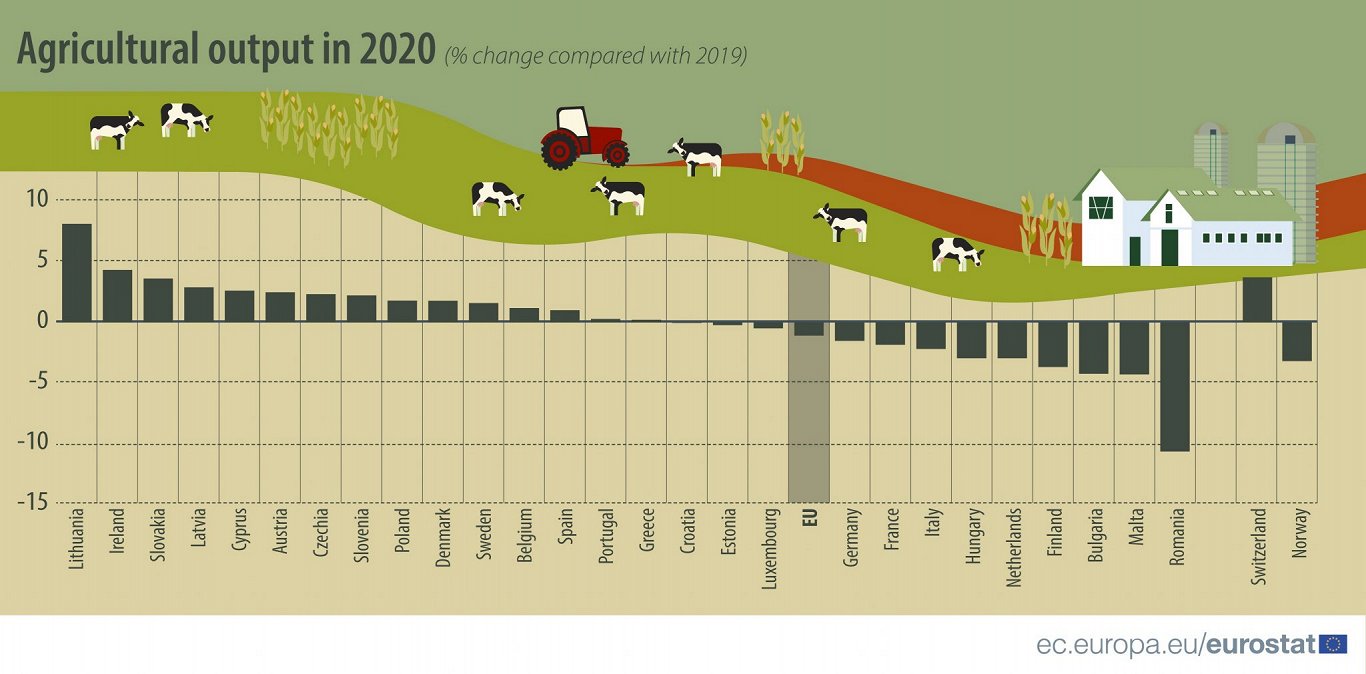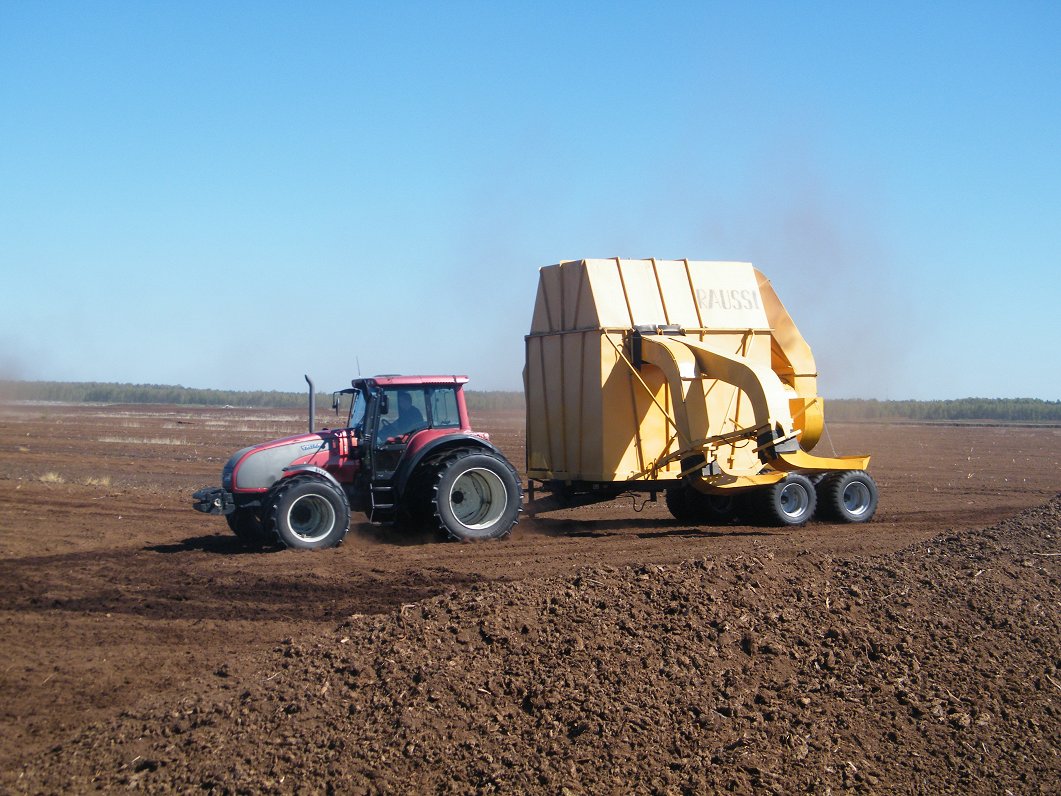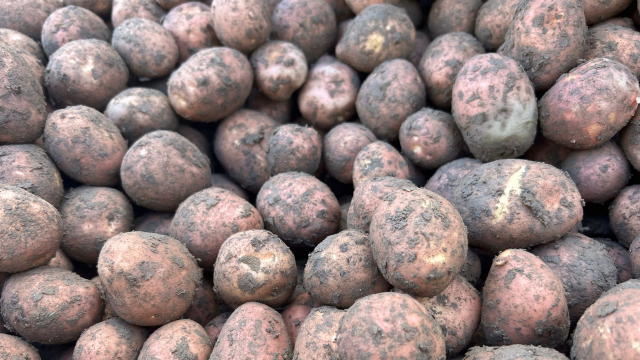With €76.3 bn (or about 18.4% of the EU total) in 2020, France had the highest total agricultural output among the Member States, followed by Germany (€57.6 bn, or 13.9%), Italy (€56.9 bn, or also 13.7%), Spain (€52.3 bn, or 12.6%), the Netherlands (€28.2 bn, or 6.8%) and Poland (€26.4 bn, or 6.4%).
While Latvia produces much less in terms of volume, it was among the best-performing countries when comparing 2020 with 2019.

In 2020, 11 out of 27 EU Member States registered a decrease in the value of agricultural output. The biggest declines were recorded in Romania (-11.3%), Malta and Bulgaria (both -4.5%), Finland (-3.9%), Hungary and the Netherlands (both -3.1%). In contrast, the highest increases, in relative terms, were registered in Lithuania (+8.6%), Ireland (+4.6%), Slovakia (+3.8%), Latvia (3.1%), and Cyprus (2.8%).
The value of both EU’s crop and animal output registered decreases of 1.0% and 1.1%, respectively.
When it comes to EU agricultural input costs (intermediate consumption), there was a slight decrease of 1.1%, as compared to the previous year, which resulted in a stronger rate of decline (1.3%) in the gross value added generated by agriculture.
Accordint to Eurostat, total agricultural labor input declined sharply in almost all Member States during the period between 2005 and 2020; the sharpest declines were in Bulgaria (an average -8.0 % per year), Slovakia (-5.5 % per year), Estonia (-5.1 % per year), Latvia (-4.5 % per year) and Romania (-4.4 % per year).
Latvia was also named as one of a few countries where the risk from pesticide use has risen rather than fallen. Compared with the average between the years 2011 to 2013, the risk from pesticide use is estimated to have declined by about 21 % through to 2019 (see Figure 10). During this timeframe, the risk of pesticide use declined in a clear majority of Member States, the steepest declines being in Romania (-62 %), Luxembourg (-50 %) and Denmark (-47 %). There were a few Member States, however, where the risk rose; among others, in Cyprus and Latvia the risk rose an estimated 40 % and in Estonia an estimated 49 %.































